site search
online catalog
RARE CIVIL WAR AMBULANCE FLAG WITH WALLET OF SURGEON IRA N. BARNES, 116th ILLINOIS, SURGEON IN CHIEF 2nd DIVISION 15th ARMY CORPS, ATLANTA CAMPAIGN, MARCH TO THE SEA, CAMPAIGN OF THE CAROLINAS
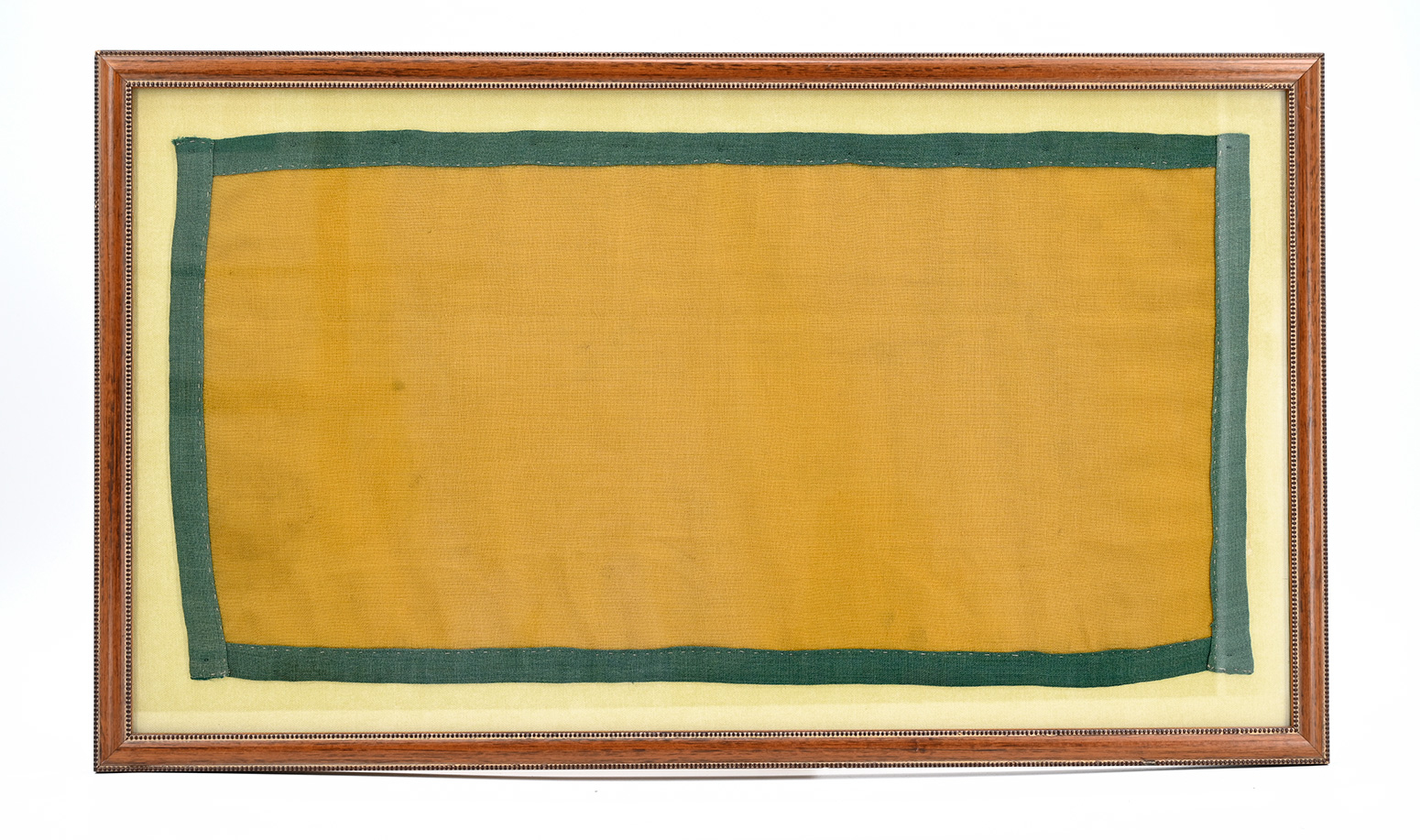
Hover to zoom

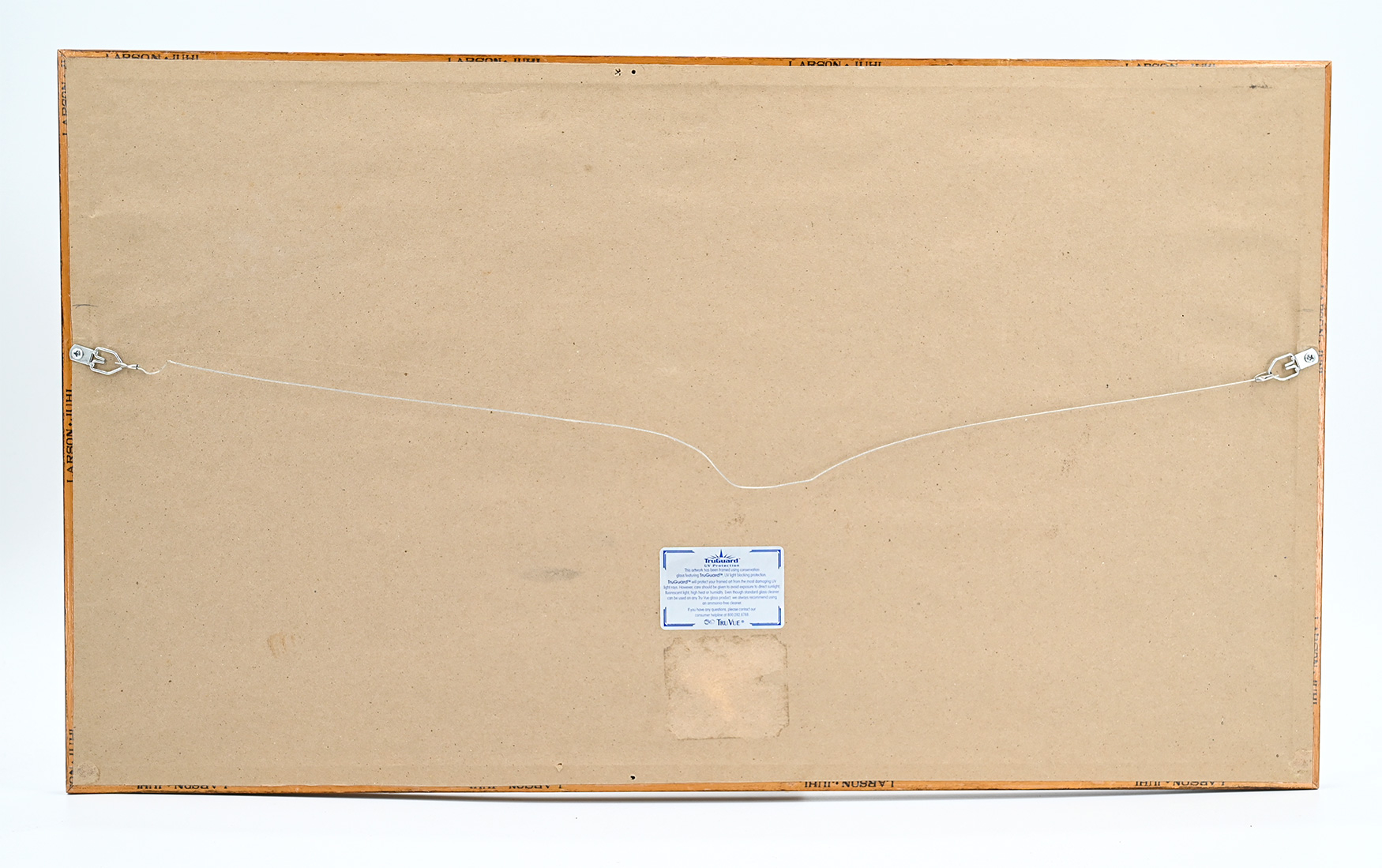
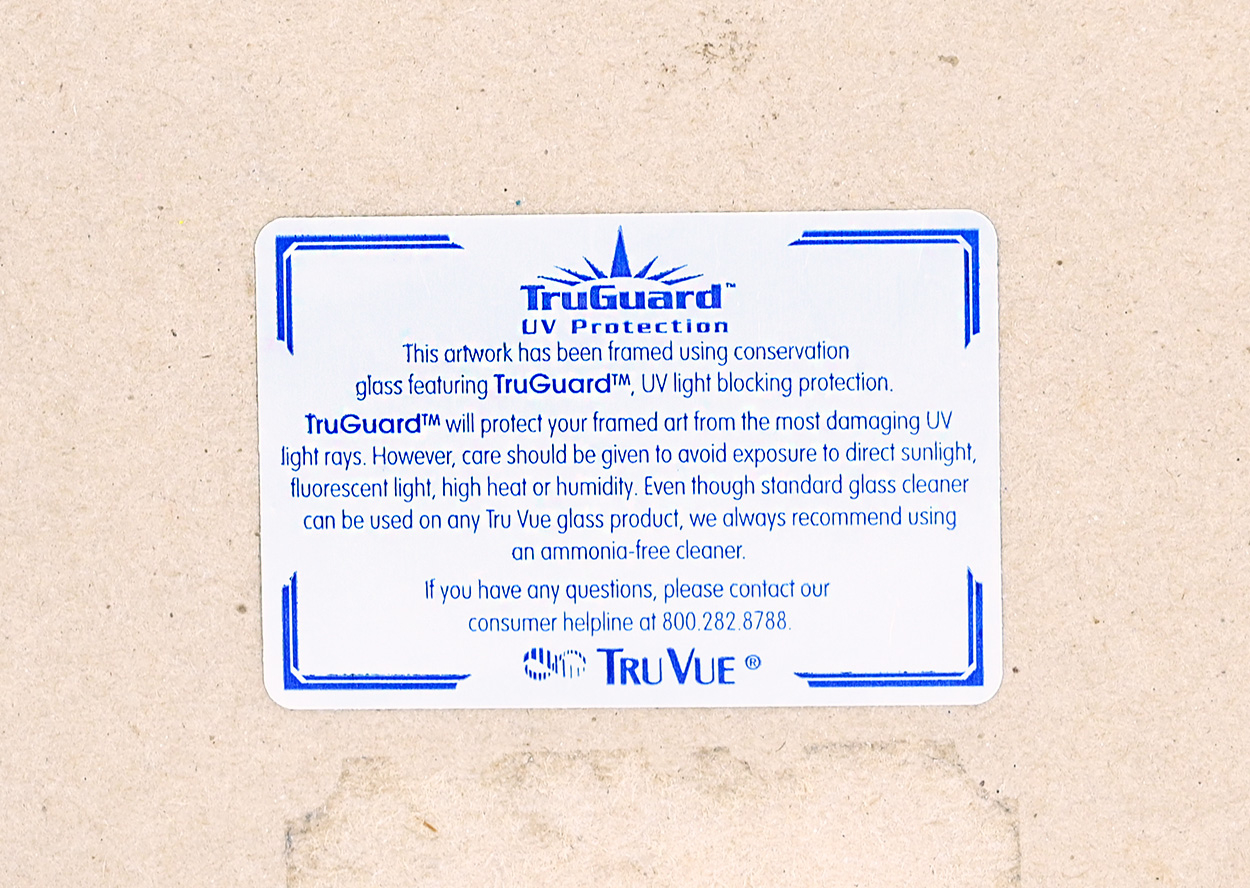
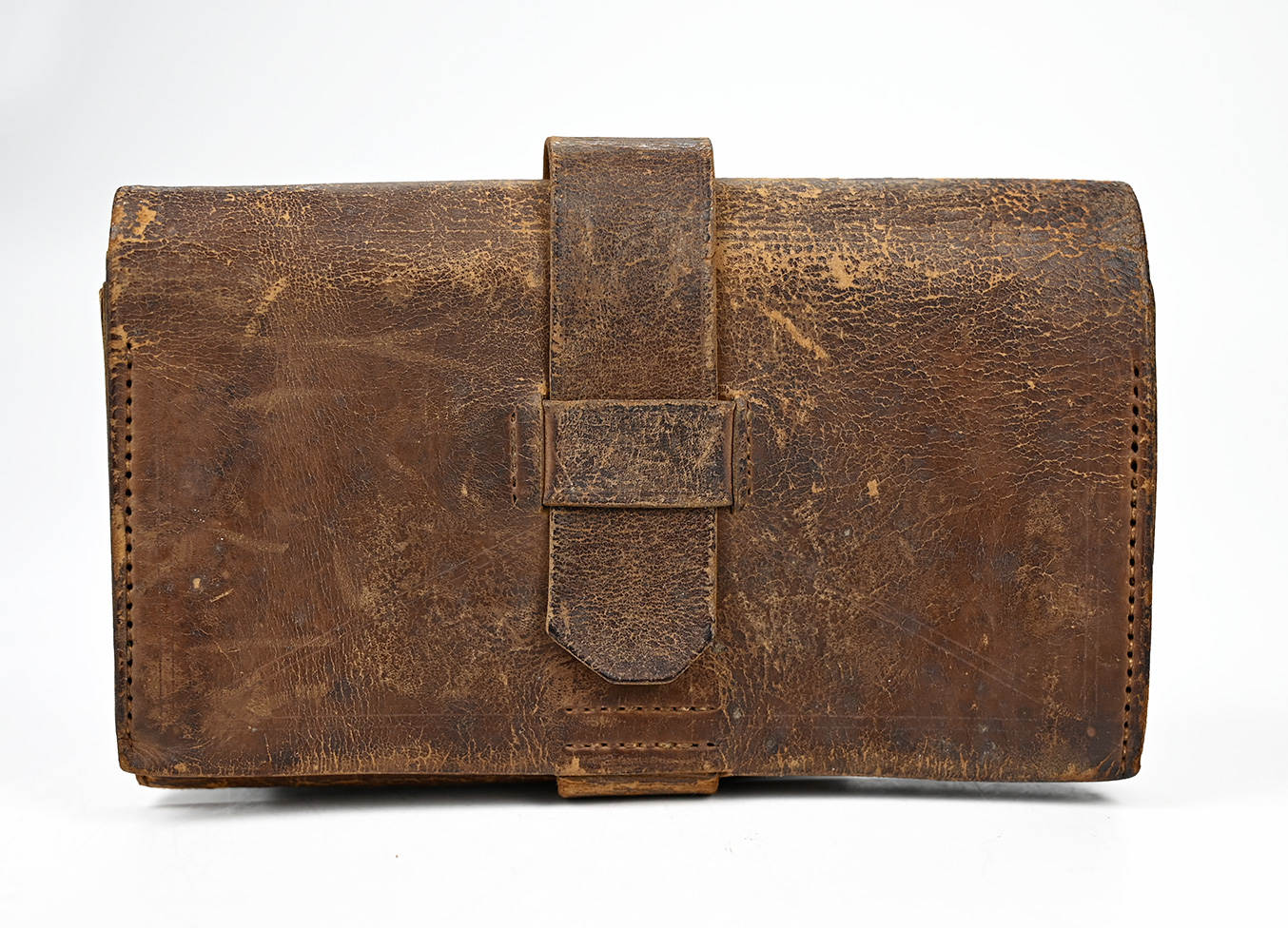
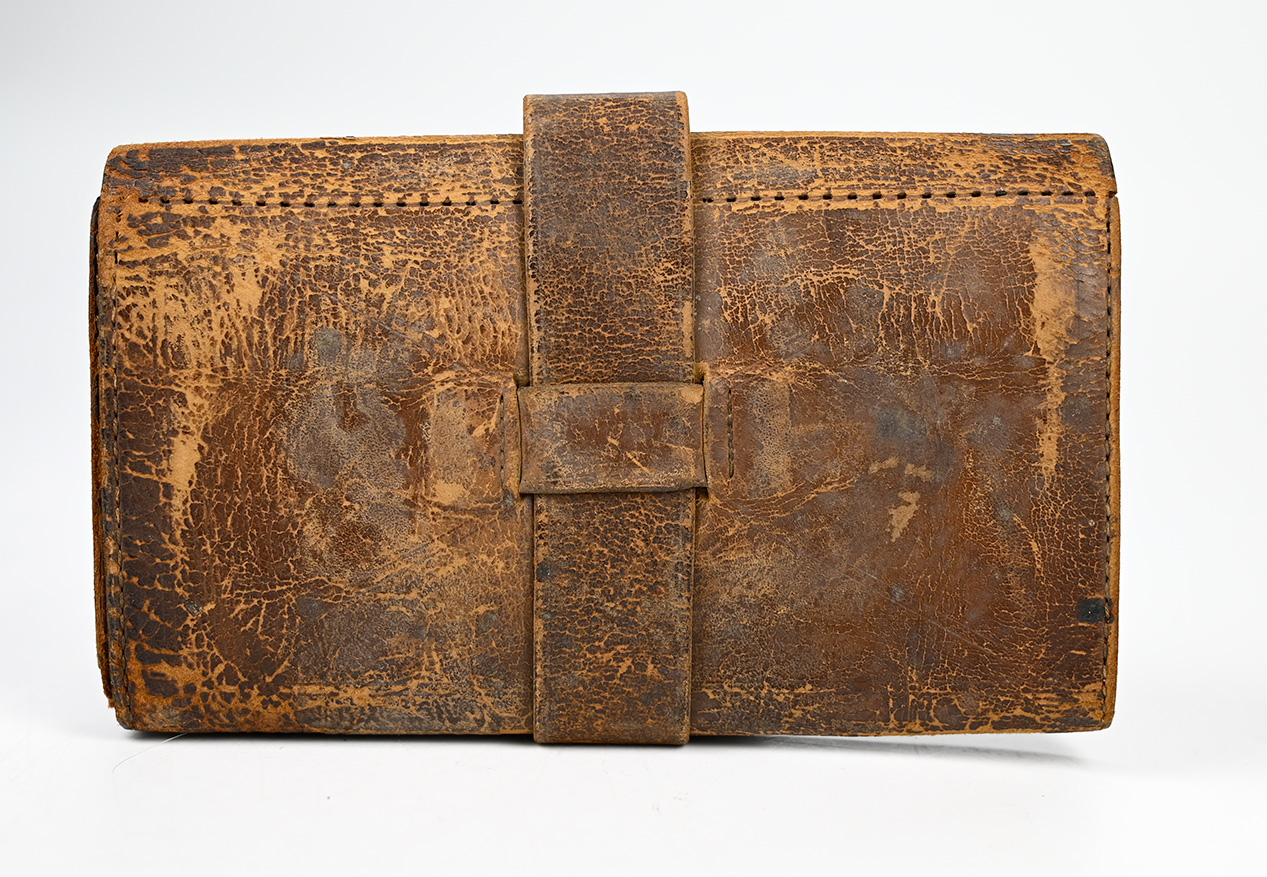
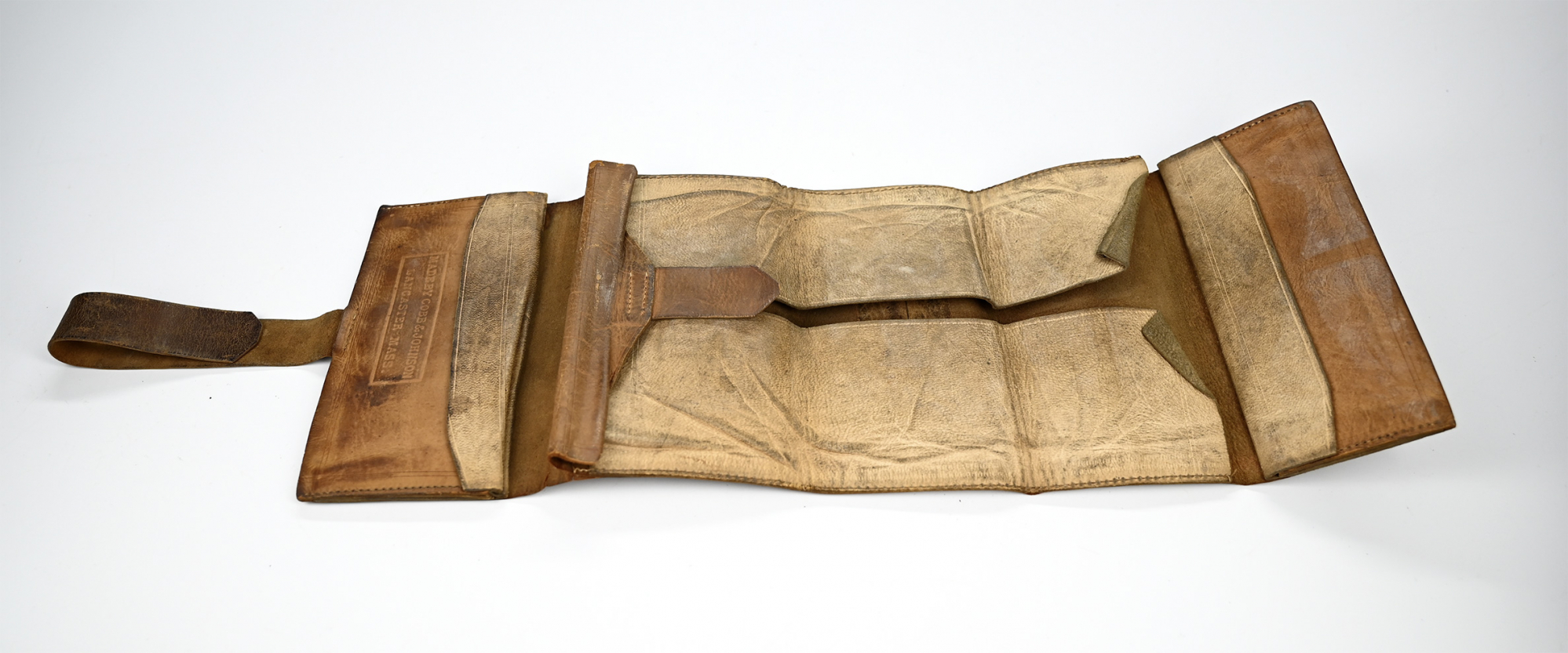
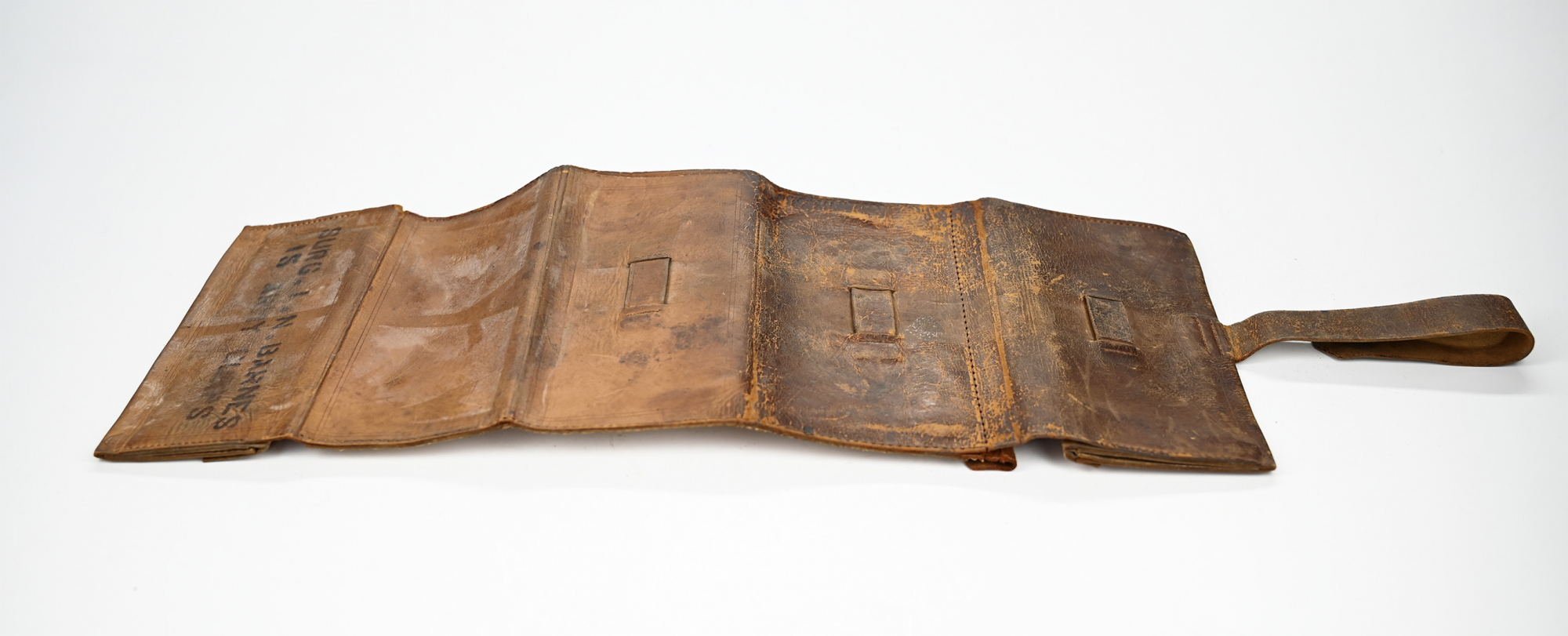
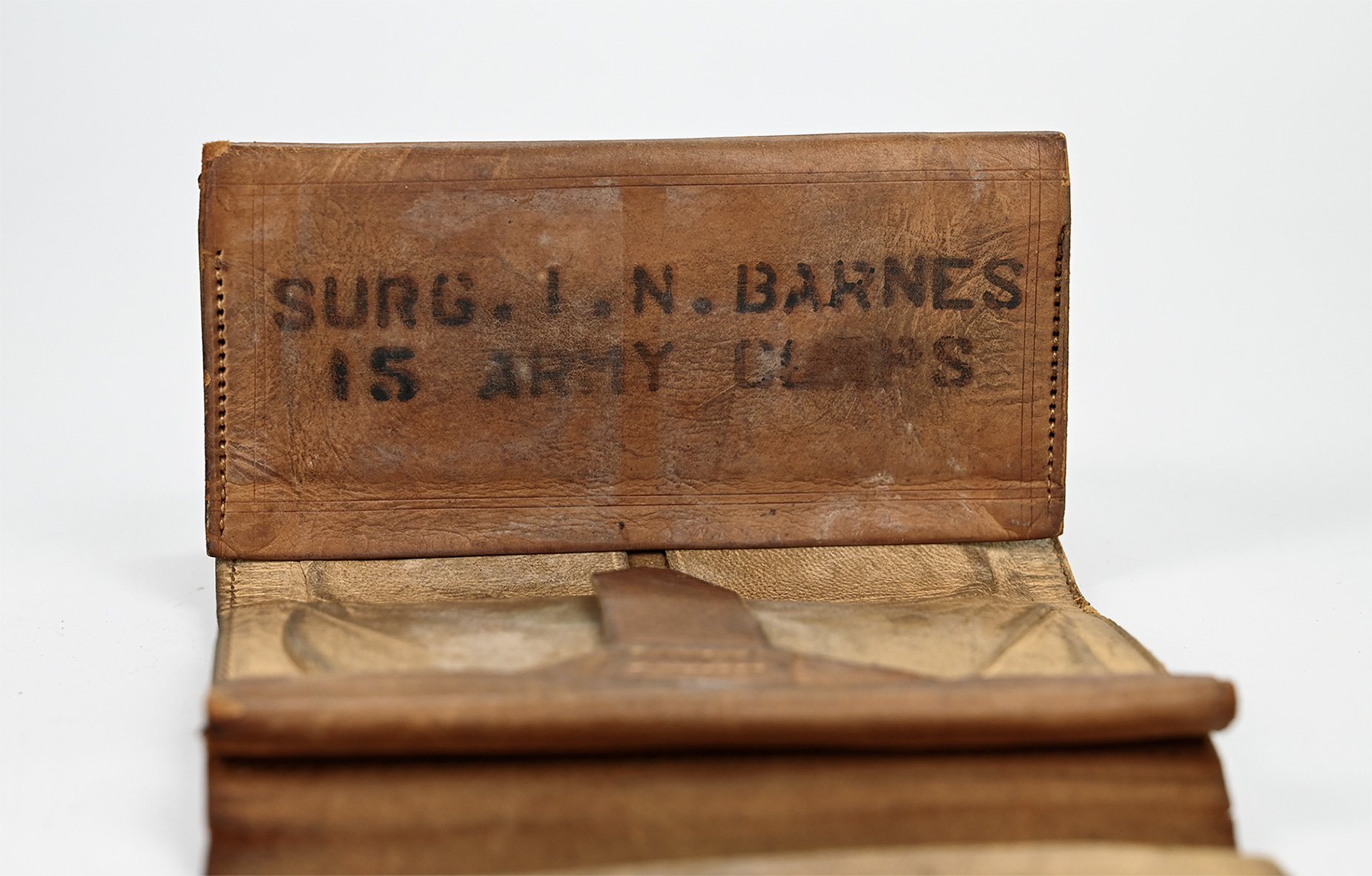
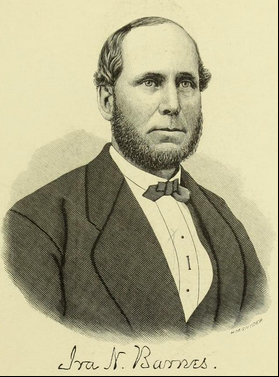
$6,850.00 SOLD
Quantity Available: None
Item Code: 88-116
Offered here is an extremely rare Civil War regulation ambulance flag. Perhaps one of three extant? This flag or marker is exactly the pattern described in American Military Equipage by Todd. "Yellow bunting flag 14 by 28 inches with one-inch green borders, designating ambulances and marked the route to hospitals." p. 314. In the source Echoes of Glory, The Union. Time Life books one reads: "These green-bordered banners marked the way for ambulances carrying the sick and wounded to hospitals.... p.292 (illustrated). Made of wool bunting our example is in perfect condition with great vibrant color. The size is now 13 3/4 by 27 1/4 inches as a result of minor age shrinking. There is a sleeve on one end made to accept a pole. The flag is entirely hand sewn but weather "field" made, or "depot" made is impossible to determine. All materials and dyes are consistent with the era 1861 to 1865.
The flag was brought home from the war in 1865 by Union Surgeon I. N. Barnes of the 116 Illinois Volunteers. This unit was "Organized at Decatur, Ill., and mustered in September 30, 1862. Left State for Memphis, Tenn., November 8, 1862. Attached to 4th Brigade, 5th Division, District of Memphis, 13th Army Corps (Old), Department of the Tennessee, November 1862. 2nd Brigade, 2nd Division, District of Memphis, 13th Army Corps, to December 1862. 1st Brigade, 2nd Division, Sherman's Yazoo Expedition, to January 1863. 1st Brigade, 2nd Division, 15th Army Corps, Army of the Tennessee, to June 1865."
With the flag comes Surgeon Barnes fine bill fold made by Cobb and Johnson Lancaster, Mass. Beautifully stenciled in the wallet is "SURG. I. N. BARNES 15 ARMY CORPS". This is accompanied by the small leather wallet of Surgeon Ira N. Barnes. The wallet is a typical wartime leather folding wallet with pockets on the ends and long side flaps that are folded in to retain documents or bills, and fitted with a long leather billet that holds the wallet closed by passing through some flat, standing loops. The stencil is typical of those made by commercial stencils sold with ink and small brush to new soldiers as marking kits.
Barnes had a brilliant record and was constantly in the field. "He came from a fine old New Hampshire family. He was a classmate of the late Nelson of Tariff fame and of chief Justice Field of the Superior court of Mass. He first came to Decatur and passed the following year in the drug business with his brother, the late W.A.Barnes... he received the degree of Master of Arts from Dartmouth college and in the same years attended his first course of medical lecturers at Dartmouth and read medicine with his Drs. Crosby and Peasies in Hanover N. H. He passed the summer in 1859 in Philadelphia attending the clinics in the hospitals and in the autumn of the same years matriculated at the Jefferson Medical college and was graduated in March 1862. He then located in Decatur and formed a partnership with the late. Dr. E. W. Moore for the practice of medicine which continued for 36 years. In 1863 he was commissioned as a surgeon of the 116th Illinois Volunteers which was attached during the whole war to the First Brigade, Second Division of Shermans famous Fifteenth army corps. He served with his regiment at various battles around Vicksburg, Champion Hill and Jackson, Missionary Ridge, Kennesaw Mountain and Atlanta. February 22, 1864, he was appointed surgeon in chief of the second division fifteenth army Corps. On the staff of Brigadier General Morgan Smith. He was on the famous march to the sea and at the storming of Fort McCallister, Ga. and then marched through the Carolinas and Virginia to Washington D.C. where with his regiment he took part in the Grand review and was mustered out of the service June 9, 1865, by reason of the close of the war." He returned to his medical practice in Decatur at war’s end, and died at his home there in 1913.
This flag is archivally and expensively mounted in a frame that measures 30 1/2 by 18 inches. It is protected by UV resistant glass. The rare flag was for half a century in the collection of Dr. Edward Burka. "Brig. Gen. Edward Burka died Jan. 9, 2021. He was 90....... As a doctor in the medical corps, he voluntarily entered the Airborne-Special Forces, where he became a master parachutist. In 1958 and 1959, he was a jumpmaster at Wiesbaden Air Force Base in Germany. From 1979 to 1983, he was the U.S. Army’s Deputy to the Surgeon General for Mobilization, responsible for planning logistics for the evacuation of U.S. cities in the event of a nuclear or biological disaster. He was also an avid collector of and expert on U.S. medical military insignia, uniforms, and instruments." It was reported to be one of his favorite items and it hung in his office at his palatial home behind his desk. A museum piece to say the least! [pe/sr] [ph:m]
~~~~~~~~~~~~~~~~~~~~~~~~~~~~~~~~~~~
THIS ITEM, AS WITH ALL OTHER ITEMS AVAILABLE ON OUR WEB SITE,
MAY BE PURCHASED THROUGH OUR LAYAWAY PROGRAM.
CLICK HERE FOR OUR POLICIES AND TERMS.
THANK YOU!
Inquire About RARE CIVIL WAR AMBULANCE FLAG WITH WALLET OF SURGEON IRA N. BARNES, 116th ILLINOIS, SURGEON IN CHIEF 2nd DIVISION 15th ARMY CORPS, ATLANTA CAMPAIGN, MARCH TO THE SEA, CAMPAIGN OF THE CAROLINAS
Most Popular
Historical Firearms Stolen From The National Civil War Museum In Harrisburg, Pa »
Theft From Gravesite Of Gen. John Reynolds »
Selection Of Unframed Prints By Don Troiani »
Fine Condition Brass Infantry Bugle Insignia »
British Imported, Confederate Used Bayonet »
Scarce New Model 1865 Sharps Still In Percussion Near Factory New »
featured item
EXCELLENT U.S. MODEL 1840 LIGHT ARTILLERY OFFICER’S SABER WITH MINTY ETCHED BLADE
This pattern was introduced in 1840 for all mounted officers other than cavalry, but with the introduction of the 1850 patterns it was limited to officers of light artillery, making it very scarce. On top being a very hard to find pattern, this one… (870-635). Learn More »


